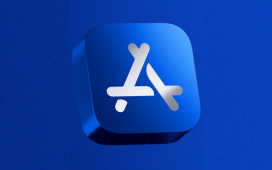A recent discovery by cybersecurity researcher Jeremiah Fowler of an unsecured database containing over 184 million unique login credentials has once again highlighted the growing threat posed by infostealers. While the sheer volume of exposed data—including emails, passwords, and authorization URLs—is alarming, the real concern is not just about the exposure itself, but in how cybercriminals collect and weaponize these credentials.
This trove of data from a wide range of services like email providers, Microsoft, Facebook, Instagram, Snapchat, Roblox, and many more, doesn’t appear to have been leaked by accident by someone who obtained the data legitimately. More likely, it was amassed by infostealers—malicious software (malware) that are designed specifically to gather sensitive information from infected devices. These malware variants silently extract credentials stored in browsers, email clients, messaging apps, and even crypto wallets. They often arrive via phishing emails, malicious websites, or bundled with cracked software.
An infamous example of an infostealer is the Lumma Stealer, which recently suffered a serious disruption of its infrastructure by authorities. Unfortunately, there are several others which may not be as widespread as Lumma, but at least at the same level of sophistication.
What this means is that the exposed credentials are likely just a fraction of what cybercriminals have already harvested from likely millions of victims worldwide. Each infected device can yield dozens or hundreds of credential sets, multiplying the scale of the problem far beyond a single breach. If a criminal can tie all these different types of stolen information to one person, like the operator of an infostealer would, it would be easy to use those details for identity theft.
The database has since been removed from public view.
How many people are affected?
Given the volume of credentials found, it’s reasonable to assume that millions of individuals had their data included in the exposed database. Since one infected system can leak multiple credentials tied to different accounts and services, the number of victims is likely far smaller than the number of exposed credentials but still alarmingly high.
Infostealers have evolved beyond simple password grabbers. Modern variants can capture autofill data, cookies, screenshots, and keystrokes, giving attackers a comprehensive toolkit to bypass security measures and launch sophisticated attacks. The stolen credentials fuel credential stuffing attacks (where an attacker uses reused logins stolen from one service to access another), account takeovers, identity theft, corporate espionage, and targeted phishing campaigns.
The fact that these credentials span a wide range of services, from social media platforms like Facebook and Instagram to financial institutions, healthcare portals, and even government accounts shows how pervasive infostealer infections have become, enabling attackers to build detailed profiles of victims’ digital lives.
What you can do
There is no way to tell whether anyone else found the exposed database before it was removed from public access. However, the exposure of such a massive dataset should serve as a wake-up call. While the breach itself may no longer be the immediate threat, infostealer malware remains an ongoing and growing threat. Here are some practical steps to protect yourself:
- Change your passwords regularly, and don’t reuse them across multiple accounts. Use unique, complex passwords for every service.
- Enable two-factor authentication (2FA) wherever possible. This makes it harder for criminals to take over your account.
- Regularly audit and clean your email inbox of sensitive documents and old passwords. Jeremiah pointed out that “people unknowingly treat their email accounts like free cloud storage and keep years’ worth of sensitive documents, such as tax forms, medical records, contracts, and passwords without considering how sensitive they are.”
- Use an up-to-date and active anti-malware solution that can detect and remove infostealer malware.
- Be careful about what you download and educate yourself on recognizing phishing emails, as these remain the most common infection vectors.
Given the scale and sophistication of infostealer operations, it’s not enough to wait for breach notifications to find out whether your credentials have been compromised. That’s why proactive monitoring is essential.
You can use Malwarebytes’ free Digital Footprint Portal to see if any of your data has been stolen by an infostealer and exposed online. We have many millions of stolen records in our database that stem from Lumma stealers alone and are being traded on the dark web. Just put in the email address you use the most, and we’ll tell you what information is out there about you.
Don’t wait for a data breach to impact you. Check your digital footprint and stay one step ahead of cybercriminals.
We don’t just report on threats – we help safeguard your entire digital identity
Cybersecurity risks should never spread beyond a headline. Protect your—and your family’s—personal information by using identity protection.









